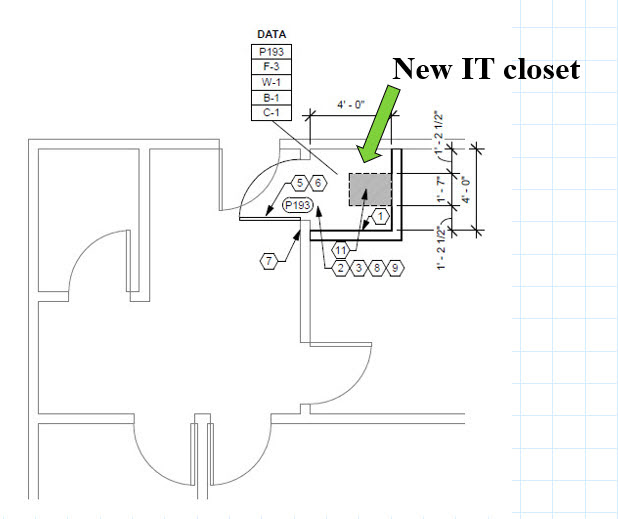March 2024: Exempted alterations that trigger compliance
Posted on - Friday, March 1st, 2024Addition of Electrical rooms
The ADA and TAS both apply to new construction as well as alterations in existing facilities. So when there is new construction or an “alteration”, then those spaces being built or altered will have to comply with the Standards. There are some exceptions.
Electrical rooms are considered machinery spaces and are exempted by section 203 and therefore do not have to comply with ADA or TAS.
203.5 Machinery Spaces. Spaces frequented only by service personnel for maintenance, repair, or occasional monitoring of equipment shall not be required to comply with these requirements or to be on an accessible route. Machinery spaces include, but are not limited to, elevator pits or elevatorpenthouses; mechanical, electrical or communications equipment rooms; piping or equipment catwalks; water or sewage treatment pump rooms and stations; electric substations and transformer vaults; and highway and tunnel utility facilities.
So when a project is just to construct or renovate electrical rooms we could assume that the entire project will not have to comply….but you might not be correct.
One of my clients was adding electrical closets in a college campus. These rooms were sometimes located in existing closets. Some of the electrical rooms were being added along corridors. But some were getting built new inside classrooms. This is where it gets complicated…..
As stated above, the ADA standards will apply to existing building or spaces being altered (based on the definition of alteration).
Definition of Alteration: 106.5.5 Alteration. A change to a building or facility that affects or could affect the usability of the building or facility or portion thereof.

The drawing above is of a classroom in a college where part of the wall is being demolished in order to provide a new IT closet.

The drawing above shows the new electrical room inside the existing classroom
The new IT closet inside the existing classroom is considered an alteration of the classroom. Since the classroom is an area that contains a primary function and it will trigger the path of travel elements that serve the classroom to be compliant.
202.4 Alterations Affecting Primary Function Areas. In addition to the requirements of 202.3, an alteration that affects or could affect the usability of or access to an area containing a primary function shall be made so as to ensure that, to the maximum extent feasible, the path of travel to the altered area, including the parking areas, rest rooms, telephones, and drinking fountains serving the altered area, are readily accessible to and usable by individuals with disabilities, unless such alterations are disproportionate to the overall alterations in terms of cost and scope.
So by adding the electrical closet to the existing classroom, the room layout changed and even though the closet is exempted, it triggered compliance with the rest of the building areas that serve the classroom.
 Abadi
Abadi 
